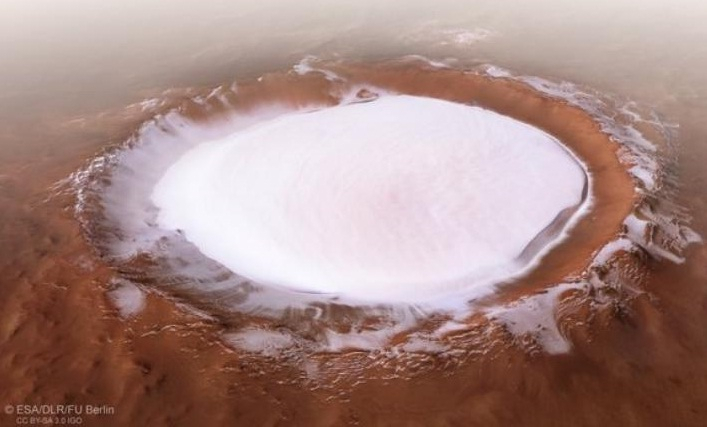
A new study has revealed that raging dust storms in Mars might be responsible for blowing away the water on the Red Planet. It should be noted that the same dust storm that raged all across the Mars recently had destroyed NASA's Mars Opportunity Rover.
Explorations on Mars conducted by NASA had previously suggested that the Red Planet once had a very thick atmosphere, and a deep ocean, likely to have covered 20 percent of the planet's surface. About 4 billion years ago, Mars lost its magnetic field, and over time, Mars lost the ability to support liquid water on its surface.
The new study report suggests that dust storms might have aided this process. Researchers who took part in this made this conclusion after analyzing the movement of water vapor in Mars' atmosphere before and after the 2018 dust storm using the European-Russian ExoMars Trace Gas Orbiter (TGO).
Data obtained from the TGO revealed that the dust storm lofted the water molecules to a much higher altitude into the Martian sky, from their typical altitude about 12 kilometers to about 80 kilometers above the ground. It should be noted that at such high altitudes, solar radiation will be very high, and as a result, water will be broken down to hydrogen and oxygen very easily. These elements will be lost in space easily.
"The global dust storm may give us an explanation. When you bring water to higher parts of the atmosphere, it gets blown away so much easier," said Geronimo Villanueva, a Martian water expert at NASA Goddard in a recent statement.
Interestingly, the TGO did not find any traces of methane on the Martian atmosphere. However, NASA's Curiosity Rover had rolled through several plumes of the gas on the floor of the Gale Crater on Mars. Several scientists believe that this methane is actually the sign of potential life forms on the Red Planet.
It was published in the journal Nature.









